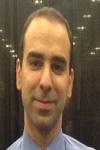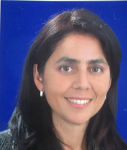Day 3 :
- Diagnosis of Cardiac Problem
New Research in Cardiology and Cardiac Surgery

Chair
Xupei Huang
Florida Atlantic University, USA

Co-Chair
Bryan Cannon
Mayo Clinic Rochester, USA
Session Introduction
Christopher Snyder
Rainbow Babies and Children’s Hospital, USA
Title: Effects of anesthesia on inducibility during pediatric electrophysiology studies
Time : 09:30-09:55

Biography:
Christopher Snyder is the Director of Pediatric Cardiology at Rainbow Babies and Children’s Hospital, Case Western Reserve University School of Medicine. His interests include general pediatric cardiology and Adult with Congenital Heart disease as well as a sub-specialty in pediatric and adult congenital electrophysiology on an inpatient and outpatient basis.
Abstract:
Background and introduction: Anesthesia has become an important part of pediatric electrophysiology studies (PEP). The purpose was to determine, (1) the prevalence of supraventricular tachycardia (SVT) and sinus tachycardia (Stach) during anesthesia induction, and (2) lack of inducibility of SVT during PEP under anesthesia. Methods IRB approved, retrospective review of PEP (1/99-1/14). Inclusion criteria: ≤ 21 years, documented SVT prior to PEP, anesthesia.
Data review: demographics, EP and anesthesia records. Two groups identified, Intravenous (IV) and inhalational anesthesia (I). Induction of SVT and Stach prior to initiating EP study was recorded as was failure to induce SVT during PEP.
Results: Inclusion criteria was met by 378 patients, 57% males, median age 14 years. IV anesthesia in 72% . During induction, only 1 patient from IV group developed SVT, (WPW patient), 10% of patients developed Stach and patients with WPW are twice at risk of developing Stach (16.19% vs. 8.06%; p = 0.02). Stach was seen more commonly with I induction (59% Vs 41%; p < 0.0001). The most common drug for I was sevoflurane ( 89%); and no differences were identified between drugs. Failure to induce SVT during PEP was 13 % and no differences seen between groups.
Conclusion: Route of anesthesia induction, inhaled or intravenous do not increase the risk of developing SVT. Sinus tachycardia is a common occurrence, and failure to induce SVT was not affected route of anesthesia.
Ivan Wilmot
Cincinnati Children’s Hospital Heart Institute, USA
Title: Pediatric mechanical circulatory support
Time : 09:55-10:20

Biography:
Ivan Wilmot received his medical degree from Emory University in 2002. He continued at Emory for his pediatric residency, and chief residency. He completed his pediatric cardiology fellowship at Texas Children’s Hospital, Baylor College of Medicine. He continued there to complete an advanced fellowship in heart failure and transplantation, and was actively involved in the Mechanical Circulatory Support (MCS) program. He has served as the co-director of Pediatric Heart Failure and Transplant at All Children’s Hospital in St. Petersburg, FL, and currently serve as an Assistant Professor at Cincinnati Children’s Hospital Medical Center in the Heart Institute. He is an active member of the Heart Failure, Transplant, and MCS team at CCHMC where he pursue research in pediatric heart failure, transplant, and MCS. He has published on the effectiveness of MCS in children with acute fulminant and persistent myocarditis, and the evolving field of pediatric MCS.
Abstract:
Mechanical circulatory support (MCS) in the pediatric heart failure population has a limited history especially for infants, and neonates. It has been increasingly recognized that there is a rapidly expanding population of children diagnosed and living with heart failure. This expanding population has resulted in increasing numbers of children with medically resistant end-stage heart failure. The traditional therapy for these children has been heart transplantation. However, children with heart failure unlike adults do not have symptoms until they present with end-stage heart failure and therefore, cannot safely wait for transplantation.
Many of these children were bridged to heart transplantation utilizing extracorporeal membranous oxygenation as a bridge to transplant which has yielded poor results. We discuss MCS options for short and long-term support that are currently available for infants and children with end-stage heart failure. Additionally, we discuss MCS as a bridge to transplantation and as chronic therapy in the pediatric population. Pediatric MCS options provide a life-saving option for the increasing population of children with refractory heart failure.
Soha Emam
Cairo University, Egypt
Title: Fetal echocardiography in developing countries, What numbers reflect?
Time : 10:20-10:45

Biography:
Soha Emam is a Professor of Pediatrics & Pediatric Cardiology at Kasr-Alaini School of Medicine, Cairo University, Egypt. She has completed her MD at Cairo University School of Medicine and has been specialized in Pediatric Cardiology. She completed her Post-doctoral training in Pediatric Cardiology at Italy. She is the Medical Coordinator of the Pediatric Cardiology Department, Cairo University and is the Head of Scientific & Conferences activity committee and a Coordinator of Research Activities of the Department. She has many publications in pediatric cardiology field and is an editor in reputed journals and serving as reviewer for many others. Her field of interest is fetal echocardiography and new echo modalities.
Abstract:
Over the past three decades, fetal echocardiography has proven not only to be a valuable tool for prenatal diagnosis of CHD, but also to have a prognostic value for such diseases. However, the application is not easily feasible in developing countries, being a highly specialized technique that requires proper high training & sophisticated technology in addition to other socio-economic factors which act as obstacles for its proper application in these countries. This article reviews experience in two of the developing countries illustrating through numbers obstacles to its proper application and ways to overcome it.
Bryan Cannon
Mayo Clinic, Rochester USA
Title: Management of Asymptomatic Wolff-Parkinson-White in Children
Time : 10:45-11:10

Biography:
Bryan Cannon is a pediatric cardiologist in Rochester, Minnesota and is affiliated with multiple hospitals in the area, including Mayo Clinic and Mayo Clinic - Saint Marys Hospital. He received his medical degree from University of Texas Southwestern Medical School and has been in practice for 19 years. He is one of 13 doctors at Mayo Clinic and one of 8 at Mayo Clinic - Saint Marys Hospital who specialize in Pediatric Cardiology.
Abstract:
Wolff-Parkinson-White (WPW) is a relatively common problem in the pediatric population occurring in 1 in 500-1000 children. WPW can present with supraventricular tachycardia, ventricular dysfunction due to pre-excitation or sudden death due to rapid conduction of atrial fibrillation through the accessory pathway.
As patients may present with sudden death as their first symptom, evaluation of patients with WPW is indicated, even if they are asymptomatic. In 2012, Pediatric and Congenital electrophysiology Society (PACES) and the Heart Rhythm Society (HRS) in conjunction with the American College of Cardiology Foundation (ACCF), the American Heart Association (AHA), the American Academy of Pediatrics (AAP), and the Canadian Heart Rhythm Society (CHRS) created a consensus statement on the management of asymptomatic young patient with WPW which serves as a guideline for evaluation and management of these patients.
Xupei Huang
Florida Atlantic University, USA
Title: Diastolic dysfunction and heart failure: Mechanism and experimental treatment
Time : 11:30-11:55

Biography:
Xupei Huang has completed his medical training from Nanjing Medical University and his PhD in Biochemistry from University of Paris XII and Post-doctoral studies in Molecular Cardiology from University of Wisconsin School of Medicine. He is currently Professor in Biomedical Science, Charles E. Schmidt College of Medicine at Florida Atlantic University in Florida, USA and a Fellow of American Heart Association (FAHA). He has published more than 85 papers in reputed journals and has been serving as an Associate Editor for Cardiology and an Editorial Board Member of repute.
Abstract:
In the past, we have focused on heart failure with a reduced ejection fraction (HFrEF). Recently, we have begun to focus on heart failure with a preserved ejection fraction (HFpEF), in which patients suffer from a diastolic dysfunction with a normal or near normal cardiac contraction. Patients with HFrEF typically have hypertension, diabetes, and various cardiomyopathies. They have a stiff ventricle that is non-compliant compared with patients with HFrEF. Diastolic dysfunction or diastolic heart failure is commonly observed in pediatric patients with hypertrophic or restrictive cardiomyopathy, primary hypertension and diabetes. We have generated a transgenic mouse line modeling human restrictive cardiomyopathy (RCM). Using this animal model, we have demonstrated that myofibril hypersensitivity to calcium is a key that causes impaired relaxation, i.e. diastolic dysfunction in mice with RCM. Using a genetic way or desensitizing chemical molecules to reduce the myofibril hypersensitivity can correct the diastolic dysfunction and rescue the RCM mice. Calcium desensitization provides us with a promising option in the treatment of diastolic dysfunction and diastolic heart failure.
Brojendra Agarwala
University of Chicago, USA
Title: Sudden cardiac death in school athletes
Time : 11:55-12:20

Biography:
Brojendra Agarwala has completed his MBBS at the age of 23 years from University of Kolkata, India and completed Pediatric cardiology fellowship from New York university medical center New York, NY, USA. He is a pediatric cardiologist and professor of Pediatrics at the University of Chicago. He has received best teacher award be the pediatric residents and the medical students. He has published 68 papers in reputed journals. He is named as one of the Top Doctors and Best pediatricians in Chicago magazine for many years.
Abstract:
Competitive athletes are those who participates in an organized team or individual sports that requires regular competition against others. Athletic activities substantially increase the sympathetic drive resulting in surge in catecholamine level that increases blood pressure, heart rate, myocardial contractility and oxygen demand. This can cause myocardial ischemia and arrhythmia that may lead to sudden death in athletes with Known and unrecognized heart conditions during athletic activities.
There are many structural and acquired heart conditions that are not clinically manifested. Many physicians are involved in medical clearance of children for participations in school sports activities. Physicians have to recognize them to protect athletes from catastrophic events. In order to prevent sudden cardiac death physicians should be aware of cardiac conditions that may cause problem. Also physicians should be familiar with general guidelines for evaluation of an athlete and clearance for participation in athletic activities.
Guidelines vary in different parts of the world. In this presentation I will discuss guidelines for European, Italian and in USA outlined by American heart Association. In this presentation the causes of congenital and acquired heart conditions and arrhythmias that can cause sudden cardiac death will be discussed with authors experience and literature review.
SofÃa Grinenco
Hospital Italiano de Buenos Aires, Argentina
Title: The prenatal diagnosis of congenital heart defects
Time : 12:20-12:45

Biography:
Dr. Sofía Grinenco, Medicine Doctor (M.D.), is a Pediatric Cardiologist member of the Fetal Medicine Unit at Hospital Italiano Buenos Aires, professor of fetal cardiology at Fundación Hospitalaria, Council Member of the Cardiology Committee of the Argentine Society of Pediatrics (SAP), member of the Argentinian Society of Prenatal Diagnosis and Therapy (SADIPT), member of the Association for European Pediatric and Congenital Cardiology (AEPC), with several postgrade courses on Epidemiology and Statistics and on Clinical Bioethics.
Abstract:
The prenatal diagnosis of congenital heart defects has contributed to an increase in survival of patients and the decrease of costs for the healthcare system. In the past few years’ advances in technique and technology have allowed a better visualization of the fetal heart, as well as further understanding and interpretation of pathological findings, increasing accuracy of prenatal diagnosis of congenital heart defects and improving therapeutic strategies and patient’s outcome.
The experience in prenatal diagnosis in a specialized tertiary healthcare Centre is presented. In a 5-year period 230 patients with prenatal diagnosis of congenital heart defects were born in our Centre. In 90% of these cases prenatal and postnatal diagnosis were the same. In 7/230 (3 %) postnatal echocardiograms were normal, being Coarctation of the aorta the most frequent diagnosis in this group. In the period studied 3 patients with normal fetal echocardiogram performed in the second trimester developed aortic coarctation after birth requiring surgery. Identifying congenital heart defects with lower detection rates and/or higher false-positive rates helped to focus on those areas that required further attention and research.
Among these prenatal detection of Coarctation of the aorta represented the greatest diagnostic challenge. Prenatal diagnosis of most types of severe congenital heart defects is feasible and it contributes to the improvement of the patient’s outcome in many aspects. Continuous research in fetal cardiology has allowed better understanding of antenatal natural history of these diseases, more precise diagnosis and in some cases timely intervention and reduced morbidity and mortality.
Jorge A. Coss-Bu
Texas Children’s Hospital, USA
Title: Malnutrition and Pediatric Cardiac Disease: What do we know?
Time : 12:45-13:10

Biography:
Jorge A Coss-Bu completed Pediatric residency and fellowship in Pediatric Critical Care Medicine at Baylor College of Medicine and Texas Children’s Hospital, Houston TX, USA and was appointed Associate Professor at the same institutions. He is board certified in Pediatrics and Pediatric Critical Care Medicine by the American Board of Pediatrics. He has over 100 scientific publications including manuscripts, abstracts and book chapters in the area of nutrition and metabolism of the critically ill child and his research work has been presented in 75 scientific events and invited to speak in more than 140 lectures in the US and worldwide.
Abstract:
Congenital heart disease (CHD) has a prevalence of 4 to 10 per 1000 live births. Neonates and young children with CHD have long been recognized to be at risk for poor growth and failure to thrive. Previous studies have found that young children with CHD often present with impaired growth parameters. Several studies have demonstrated a high incidence of both acute and chronic malnutrition in infants and children with CHD admitted to the hospital. The poor preoperative nutritional state of these patients is often exacerbated postoperatively as the metabolic response is characterized by altered energy demands, a complex inflammatory state, and protein catabolism. The malnourished patient is at greater risk for developing infection and experiencing poor wound healing given the decreased number of nutritional substrates available to respond to the increased catabolic effects of injury from surgery. Achieving adequate nutritional intake postoperatively is often difficult and may be affected by a combination of genetic factors, increased metabolic demands, inefficient nutrient absorption, postsurgical fluid restriction, oropharyngeal dysfunction, and frequent interruptions of enteral feeding for procedures. Malnutrition has been shown to impact the physiologic stability of critically ill children, which is of importance in the neonate or child who is often hemodynamically unstable following cardiopulmonary bypass and cardiac surgery. Although advancements in surgical technique and postoperative management have dramatically improved mortality rates and hospital outcomes in patients with CHD, appropriate nutritional intake to cover metabolic demand in infants and young children postoperatively remains a frequent obstacle.
Paloma Manea
University of Medicine and Pharmacy"Gr.T.Popa", Romania
Title: Could be the severity of temporo-mandibular disorder a significant prognosis marker for cardiac involvement in MASS phenotype children ?
Time : 14:00-14:25

Biography:
Paloma Manea MD, Ph D, FACCP is a Specialist in Cardiology and Internal Medicine, competence in echocardiography, Lecturer at ’’Grigore T.Popa’’ University of Medicine and Pharmacy, Iasi, Romania. She was admited to ‘’Emil Racovita” high school in 1980, at first position, with 10 mark (written test at Mathematics and Roumanian Language). She was admitted to “Grigore T. Popa” University of Medicine and Pharmacy, Faculty of Medicine , in 1984, at first position( from 4,500 candidates), with 9.96 mark (written tests at Biology, Chemistry and Physics).
Abstract:
MASS phenotype associates skeletal features, one of them being temporo-mandibular disorder (TDM). Apparently an innocent condition, TDM affects life quality, provoking symptoms like headache, neck and shoulder pain, dizzeness, tinitus and even deafness. Connective tissue in fibrilinopathies has the same abnormalities in the mitral valve, as well as in temporo-mandibular joint and this affirmation has been proved by multiple studies during last decade.
We’ve selected 46 children, diagnosed with MASS phenotype, aged between 5-17 years, with a predominance of females (70%). They were monithorized for 24 months, quarterly, using cardio logical and dental examination; Ghent revised criteria, electrocardiogram, echocardiogram and magnetic resonance imaging (MRI) for temporo-mandibular joint. 40% of the patients (18 of 46) associated TMD, proved by dental examination and MRI. 6 of these 18 patients with TMD revealed a severe dysfunction of this joint and all of them increased their dyspnea (as symptom) and their mitral regurgitation, pulmonary pressure values ,during 24 months observation.
As an invasive investigation of mitral degeneration(biopsy) isn’t the best option for deciding the surgical moment , we consider that non-invasive assessment of temporo-mandibular joint, in this fibrillinopathy, could be a useful prognosis marker for mitral deterioration(if abnormalities of connective tissue are similar). We’ ve made an adequate and in time selection of those 6 patients with cardiac surgical indication, so we reffered them to the cardiac surgeon and we’ve made this decision accounting the following: worsening dyspneea, supported by augmented mitral regurgitation, pulmonary pressure values and a non-conventional, but very precise marker of connective tissue deterioration: MRI of temporo-mandibular joint affected by dysfunction.
Jie Tian
Children’s Hospital of Chongqing Medical University, China
Title: Measurements in pediatric patients with cardiomyopathies: comparison of cardiac magnetic resonance imaging and echocardiography
Time : 14:25-14:50

Biography:
He is the Professor of Pediatrics, Doctoral supervisor as well as Vice-president of Children’s Hospital of Chongqing Medical University. He is also Vice-Chairman of China Pediatric Cardiology Society and Deputy Director of Chongqing Cardiology Committee.
Abstract:
Aims: Cardiomyopathies are common cardiovascular diseases in children. Cardiac magnetic resonance imaging (cMRI) and echocardiography (Echo) are routinely used in the detection and diagnosis of pediatric cardiomyopathies. In this study, we compared and explored the correlation between these two measurements in pediatric patients with various cardiomyopathies.
Methods and Results: A total of 53 pediatric patients with cardiomyopathy hospitalized in recent three years in our hospital were collected and analyzed. All of them and 22 normal controls were measured with both cMRI and Echo. The cardiac functional score of the patients was graded according to the criteria set by New York Heart Association. The cardiac function indexes measured with both cMRI and echo included left ventricular end diastolic volume (EDV), end systolic volume (ESV), ejection fraction (EF), fractional shortening (FS). These parameters were somehow lower in cMRI measurements compared to that in echo measurements. Index of the diastolic function such as peak filling rate (PFR) measured with cMRI had a good correlation with clinical cardiac functional score, while the index of the diastolic function (E/Aã€IVRT) measured with Echo was not well correlated with the clinical cardiac functional score. Significant systolic dysfunction was detected by cMRI in 34 patients with dilated cardiomyopathy, left ventricular no compaction, or endocardia fibroelastosis. Significant diastolic dysfunction was detected by cMRI in 19 patients with hypertrophic cardiomyopathy or restrictive cardiomyopathy showing an alteration in PFR and EDV.
Conclusion: Both cMRI and Echo are of great value in the diagnosis and the assessment of cardiac function in pediatric patients with cardiomyopathy. CMRI could accurately display the characteristic morphological changes in the hearts with cardiomyopathies, and late gadolinium enhancement on cMRI may reveal myocardial fibrosis, which has obvious advantages over Echo measurements in the diagnosis. Furthermore, cMRI can measure quantitatively the ventricular function because it does not make invalid geometrical assumptions.
Najlaa AL Rajaa
King Faisal University, Saudi Arabia
Title: Antenatal Diagnosis of Congenital Heart Diseases
Time : 14:50-15:15

Biography:
Najlaa AL Rajaa is working as Former Program director for Saudi board training program at MCH AL HASAA and Consultant pediatric and fetal cardiologist aslo at MOH. clinical research fellow in fetal and neonatal cardiology at University of Alberta. Educated from University of Ottawa.
Abstract:
Fetal echocardiography is the ultrasonic evaluation of the fetal CVS. It is the 1ry modality for defining & evaluating fetal cardiac status, it requires detailed analysis of the anatomy from numerous views. Fetal echocardiography aims for prenatal diagnosis of critical and simple CHD, it allows for improved clinical status after birth. Indications of Fetal echocardiography:
Fetal, maternal and Familial. Antenatal diagnosis of CHD May lead to better surgical outcomes, prepares The Medical Team to deal with critically sick. Good intra-natal & postnatal care can be offered to the NN. Finally, Family will prepared emotionally & financially to accept such a baby.
Antenatal diagnosis of CHD. Demands a systematic approach to the investigation of the fetal heart, this approach is called Sequential segmental analysis of the fetal CVS: depends on the recognition of the morphology & connections of the 3 segments of the fetal heart. Steps for sequential segmental analysis of fetal CVS (Showing Normal Video Images).Assessment of fetal cardiac function will be discussed as part of hemodynamic assessment of the feral cardiovascular system.
Gabriela Juarez
La Salle University, Mexico
Title: Echocardiographic screening vs. symptomatic diagnosis for patent ductus arteriosus in preterms
Time : 15:35-16:00

Biography:
Gabriela Juarez is graduated from the Medicine School at La Salle University, and is Postgraduate in pediatrics at Children's Hospital of Mexico "Federico Gómez" and Neonatology in the Spanish Hospital of Mexico. Currently she is attending neonatologist in N.I.C.U. in the American British Cowdray Medical Center in Mexico City.
Abstract:
Background: The persistence of Ductus arteriosus, the aim of this study is to evaluate the possible benefit in the treatment for ductus closure when a early (less than 72 hours of life) echocardiographic screening is done versus when the echocardiographic diagnosis is realized only in present of associated symptoms. Methods: Preterm without malformation followed by two strategies: patent ductus arteriosus (PDA) screening or echocardiographic study on suspected PDA for symptoms (control group). We analyzed the ductus characteristics, the presence of pulmonary hypertension and the treatments for their closure. We analyze the result in relation of the premature age as: late preterm (34 to 36 gestational age weeks), moderate (30 to 33) and extreme (< 30). Results: There was no difference in the proportion of new borns diagnosed with PDA among the strategies (screening 18.6 % [101/543] vs 18.1 % [55/304], p = 0.92). In the control group, 53 % were diagnosed after 72 hours of life. There were no differences in realtion of the ductus characteristic among the groups. The closure treatment were similar in the two strategies among the moderate and late preterm, but was more aggressive in the control group in the extreme preterms.
Conclusion: The echocardiographic screening for PDA in extreme preterm new borns reduces the time to detect it, and allow to give less aggressive treatment. We do not recommend their use in moderate o late preterm new born.
Munesh Tomer
Medanta- The Medicity, India
Title: Unconventional use of Amplatzer devices: Percutaneous closure of non-septal cardiac defects/malformations
Time : 16:00-16:25

Biography:
Munesh Tomar is a well-known pediatrician in the country with about 10 to 15 years of work experience in the field of pediatric cardiology. Presently she is working as a Senior Consultant in the Department of Pediatric Cardiology and Congenital Heart Disease in Medanta, Gurgaon since March 2011. The major areas in which she is an expert includes- Echocardiography, transthoracic including 3D, transesophageal Ech., fetal echocardiography, evaluation and management of arrhythmias, diagnostic cardiac catheterization etc.
Abstract:
Introduction: Device closure for septal defects as fossa ovalis ASD, VSD and PDA is now a well-accepted indication. The Amplatzer devices are the most commonly used throughout the world. In this study, we are reporting the efficiency of closure of non septal defects with the Amplatzer group of devices although they have not been prototyped for use in such conditions.
Study design: Retrospective study, tertiary referral center.
Aim: To study the use of Amplatzer group of devices in non-septal defects/malformation.
Material & Methods: 29 patients in the age group 4 months-67 years, were treated percutaneously with Amplatzer devices for the following conditions: coronary arteriovenous (AV) fistula (Amplatzer duct occluder, n=6), pulmonary AV fistula (Amplatzer duct occluder, n=2), closure of ascending aorta perforation (Amplatzer septal occluder, n=2), ruptured sinus of Valsalva (Amplatzer duct occluder n=9), Fontan fenestration closure (Amplatzer PFO occluder and Amplatzer septal occluder one patient each), closure of large decompressing venous channel from Glenn (Amplatzer vascular plug, n=5) and closure of mitral paravalvular leak (Amplatzer septal occluder, n=1) and aortic paravalvular leak (Amplatzer duct occluder, n=2).
Results: Successful closure was achieved in all coronary AV fistula (immediately n=4, at 3 months in all), ruptured sinus of Valsalva (immediate in all), fenestrated Fontan (immediately in all), decompressing vein post Glenn (immediate) and ascending aorta perforation (immediate). The aortic paravalvular leak closed at 3 months follow-up. Continued residual flow persisted in mitral paravalvular leak at 6 months follow up.
Complication: Intravascular hemolysis and residual mitral regurgitation persisted in the patient with mitral paravalvular leak requiring surgical explanation and closure. On follow up ranging from 2 months-6 years, complete closure of the defects persisted with no adverse effect.
We conclude that, although devices have not been recommended for closure of non septal defects, it is possible in selected cases to treat these conditions non surgically with the use of non-prototype Amplatzer device without significant complications. Though strict long term follow up will be necessary before concluding that it can be safe alternative to surgery.
David Gozal
Hadassah University Hospital, Israel
Title: Sedation and anesthesia in the cardiac catheterization lab
Time : 16:25-16:50

Biography:
David Gozal is Director of the Sedation Service, Dept of Anesthesiology and Critical Care Medicine, Hadassah University Hospital, Jerusalem, Israel The Hebrew University of Jerusalem, Israel
Abstract:
In the last decade, procedures in the Cardiac Catheterization lab become more complex, take longer time, and involve higher sick patients. That led to many changes in strategy, and move from the Operating Room to the Cathlab. This originated new challenges to attending physicians and Anesthesiologists particularly. More and more they are managing a large range of children of different ages, different cardiac anomalies (some very complex), requiring an intervention in the cathlab instead or as a supplement to the surgery. No need to say that the Cathlab is a remote location, creating a hostile and unfamiliar environment, that makes the management of these patients more challenging.
Therefore, many of these procedures require General Anesthesia instead of Sedation. The Anesthesiology Department must be active in developing protocols and management guidelines.
The aims of this lecture will be to:
1- Describe the different indications for cardiac interventional procedures
2- Discuss the choice of the anesthesia technique (General Anesthesia versus Sedation)
3- Explain the notion of sedation and its complications
4- Decide the level of expertise of the physicians in charge of these cases
5- Consider safety as an important concern in this special setup
Amir A Sepehri
CAPIS, Belgium
Title: New advances in digital cardio-graph for screening and detecting heart diseases in children
Time : 16:50-17:15

Biography:
Amir A Sepehri has received his PhD from ‘faculté polytechnique de mons’ (Mons University, Belgium), in Digital Audio Signal Processing. He has worked on a special research program on ‘Computerized Screening of Congenital Heart Disease’. The program was aimed toward obtaining a special diploma known as ‘l’Agrégation de l'Enseignement Supérieur’ in the same university. The result of his research work is formulated as Arash-Band and it is internationally patented. He has several publications on the CHD screening and detection. He is currently Director of CAPIS Biomedical R&D department.
Abstract:
Statistical analysis shows that around 1% of children are born with congenital heart diseases that count for about 10% of all congenital anomalies. While as many as 70% have asymptomatic extra sounds which are sometimes confused with pathological heart sounds during auscultation. It is sometimes vital that the conditions of these children be screened as early as possible and before 12 years of age. Studies show that the screening errors (positive or negative), are still substantial in primary health care centers, a large number of pediatric referrals for cardiac evaluation have normal hearts. Based on our unique and internationally patented processing method on murmur characterization, the Arash-Band method and its derivatives, an original digital phonocardiograph is developed. The new digital phonocardiograph has been tested on more than 1000 cases. The device has proven to have a >90% sensitivity, specificity and efficiency with correct diagnosis in children with heart diseases and 100% diagnostic accuracy with normal hearts with or without innocent murmurs The development of the new digital cardiograph also required automated end-pointing and segmentation of children´s heart sounds. For that purpose, we developed a novel method by paying special attention to physiological effects of respiration on pediatric heart sounds and using neural network classifiers. The new digital cardiograph exhibits superior performance than a pediatric cardiologist who relies on conventional or computer-assisted auscultation and drastically reduces unnecessary use of echocardiography. The new digital cardiograph is a children lives saver in developing countries and also it opens a new era for children heart states verification through telemedicine.

Biography:
Michelle Grenier is a professor of Pediatric Cardiology with experience in imaging, particularly in the area of myocardial changes related to cardiomyopathy and heart failure. Over the past 20 years, she developed a particular interest in identifying young athletes at risk for sudden cardiac death (SCD).
Abstract:
Introduction: Sudden Cardiac Death (SCD) is fairly frequent in the young athletic population, most common causes being hypertrophic cardiomyopathy (HCM), coronary artery anomalies and electrical abnormalities (including WPW, Long QT syndrome). The use of screening tools looking for these conditions remains controversial. EKG is an adjunct to SCD screening, but may lead to false positive results due to conditions such as physiological hypertrophy seen in athletic hearts. This athletic hypertrophy (eccentric or concentric) constitutes a "gray area" of abnormality. Hypothesis: Elite adolescent rowers will manifest cardiac changes including hypertrophy and EKG changes normally seen in elite adult rowers.
Methods: Cardiac screening was performed at an elite high school rowing event. 77 rowers participated, of age 15-18. 65% of them were male. The Protocol consisted of a 12-point AHA questionnaire, physical examination, 12-lead EKG, and an echo done on site. The preliminary results of the studies were given to the participants prior to completion of the study. Abnormal final results were communicated. Results: All participants had normal physical examinations. None had overt abnormalities by echo. Subtle abnormalities were seen including: 2 dilated aortic roots (1 with a dilated main Pulmonary artery/ Tricuspid and Mitral regurgitation). Also 1 MR and TR. Coronary origins and proximal vessels were visualized in 53 of 77 participants. None of the subjects exhibited hypertrophy, although 20 (25%) had coarse posterior wall or apical trabeculations. LVEDd was increased in 9 of the rowers (12%). Ejection Fraction (EF) was calculated in 73/77, with 55/77 having EFs greater than 55%. The remaining EFs were less than 55% with one at 48%. Of note, septal and lateral DTI velocities fell within normal range. By EKG, 75/77 were in sinus rhythm (2 were functional). 4 had LVH criteria (2 had increased LVEDd by echo), 3 with long LQT (1 with dilated MPA and aortic root), 2 first degree AV block, 1 WPW (symptomatic). EKG abnormalities were communicated.
Conclusions: In this population of young, elite rowers, there were 4 patients identified as having risk for SCD, at a rate of 3.1%. Few false positive EKGs for hypertrophy were seen. Elite young rowers do not exhibit the eccentric hypertrophy described in adult rowers, which may be a manifestation of the duration of high level participation in the sport or the age of the rower.
Silvana Molossi
Baylor College of Medicine, USA
Title: Sudden Cardiac Death in Young Athletes: Feasibility of Large Community Screening

Biography:
Silvana Molossi Lawrence joined the Faculty at Baylor College of Medicine and Texas Children’s Hospital as an Associate Professor, Section of Pediatric Cardiology, in March 2011. Dr. Lawrence has been working for the past six years in screening young athletes for conditions known to be high risk for sudden cardiac death (hypertrophic cardiomyopathy, in particular). Dr. Lawrence is the Vice President of Science and Research for the Championship Hearts Foundation, Austin, Texas.
Abstract:
Cardiovascular screening of adolescent athletes is a controversial topic. Questions of sensitivity, specificity, practicality, and costs as well as appropriate protocols remain unanswered. Moreover, little is known about the natural history of factors that predispose young athletes to sudden cardiac death (SCD). History and physical exam remain the recommended approach in the US, whereas the addition of an ECG is widely used in Italy and other countries, at times also echocardiography and stress exercise test. Feasibility of large screening in the young population is debatable, especially related to its predictive value and the rare event of SCD. Beginning in 2010, the Texas Adolescent Athlete Heart Screening Registry (TAAHSR) project has conducted community-based cardiovascular screenings for adolescent athletes aged 14-18 years and of multiple ethnicities.
Medical and family cardiovascular history, a 12 lead ECG and a limited 2-D echocardiogram (ECHO) are obtained. All athletes with positive findings due to concern for a possible cardiovascular condition at screening are referred for complete cardiology evaluation and follow up results tracked subsequently. About 8% of athletes are referred due to either ECG or ECHO abnormalities. The prevalence of SCD-related conditions is 0.22% of the population screened. History data does not correlate with likelihood of referral nor positive cardiac diagnosis. Quality of data and trained personnel are of paramount importance to decrease false positives and increase yield of detection of true cardiovascular conditions in the young athlete population. Large-scale community screening in high school athletes using both ECG and ECHO identifies previously unknown SCD-related conditions.
Vasileios Bouras
Cipher Health, USA
Title: Predicting readmission of heart failure patients using automated follow-up calls

Biography:
Vasileios Bouras joined CipherHealth in April 2012 as Head of Patient Data Analytics to help improve patient outcomes through patient data analytics. Vasileios provides leadership and analysis for numerous reporting and statistical research project; most recently developing a model to predict a patient’s readmission probability. Vasileios holds a BS in Management Science and Technology from Athens University of Economics and Business where he graduated top of his class and a MS in Operations Research from Columbia University
Abstract:
Cipher Health brings care providers and patients together, but that's not all. Over the years, we've brought together technologists, clinicians, engineers, consultants, students, coders, researchers, communicators, politicos, and a host of others. We're as passionate about our team as they are about healthcare, and it shows.
Readmission rates for patients with heart failure (HF) remain high. Many efforts to identify patients at high risk for readmission focus on patient demographics or on measures taken in the hospital. We evaluated a method for risk assessment that depends on patient self-report following discharge from the hospital. In this study, we investigated whether automated calls could be used to identify patients who are at a higher risk of readmission within 30 days. Our conclusion was that patients at an elevated risk of readmission can be identified based on the trend of their responses to automated follow-up calls. This presents a simple method for risk stratification based on patient self-assessment.
Patricia Bastero
Baylor College of Medicine USA
Title: Good, pretty and cheap: creating endless learning opportunities with a new in situ simulation based cardiology-training program.

Biography:
Currently I am also involved with The Congenital Heart Surgery project in Mexico, in collaboration with TCH international services. I participate in many internationals ECMO courses bringing a good "hands on" experience with high fidelity simulation for ECMO.My main research interest is based on education research at the moment. My past research experience involves my PhD thesis, a prospective investigation of the relationship between the Vitamin D receptor gene and Estrogen receptor gene polymorphisms, and their relation to the growth pattern in healthy children from birth to 7 years of age.
Abstract:
Background: Acute care inpatient units, such as cardiology floors, are high acuity and highly specialized areas with an increased potential for codes and other emergency events. Simulation based educational programs are a very effective and efficient way to train health care providers on emergency situations, and improving their confidence and comfort when treating high risk patients. We present the results of the first in-situ simulation room in our cardiology floor, the learning opportunities created, the cost and the impact of this new regular activity in our staff.
Methods: We installed our simulation equipment, including a camera and a mock crash cart, in one of the free procedure rooms in our cardiology floor. Five simulation instructors with experience on cardiology emergencies and/or CRM skills participate in the program. We run twice weekly, mostly, “just in time” simulation scenarios. We use the small conference/family room on the cardiology floor for our debriefings. The scenarios are run for 10 minutes, debriefings for 20 minutes. Evaluations are filled post-simulation activities every time, by every participant.
Results: We created over 994 multidisciplinary educational opportunities, training 97% of the residents, 100% of the cardiology fellows, 67% of the NPs and 90% of the RNs, on our cardiology floor. Over 85% of the scenarios were run by the same three instructors and 80% of the scenarios were conducted during daytime hours. The total cost was $37,205. The evaluations were overall >4/5 when assessing for self-reported ability to perform as part of a team during high-stakes events, increasing the vigilance to patient safety during crisis and self-confidence in handling critical situations. Discussion: It is feasible to create an interesting and engaging “in situ” educational program with minimal equipment and cost, and limited manpower that improves team and personal performance. We need further research to evaluate whether this educational method helps improving patient safety, by, for example, increasing rapid response team (RRT) calls while decreasing real codes, and improving code outcomes.
Randy Richardson
St. Joseph's Hospital and Medical Center, USA
Title: Color Coded 3-D Models of Cardiac Anatomy Improves Identification of Structures in Congenital Heart Disease.

Biography:
Randy Richardson, MD Associate Dean for Medical Education at St. Joseph's Hospital and Medical Center. His specialization is Pediatric Radiology or Radiologist.
Abstract:
Objective
Cardiac CT angiography (CCTA) with three dimensional reconstructions is quickly becoming the new standard for identification and characterization of congenital heart diseases. The purpose of this study is to demonstrate effectiveness of standardized color-coding of the anatomical structures in 3-D reconstructions of congenital heart diseases using CCTA.
Materials and Methods
An easy-to-follow color coding scheme was implemented for the various anatomical structures. The aorta and its branches (including coronaries) were colored bright red. The pulmonary arteries and veins were colored dark blue and dark pink respectively. The ventricles were colored in a lighter shade of their respective outflow tracts to delineate the two chambers. Hence, the left ventricle was colored a lighter shade of red and the right ventricle was colored a lighter shade of blue. The left and right atria were colored an even lighter shade of red and blue respectively. The tracheo-bronchial tree was depicted in yellow.
CCTA data of 5, randomly selected, patients with congenital heart disease was selected. 3D reconstructions of the anatomy were performed with no color, random color, and standardized color schemes (as described above), using commercially available workstations. Total of 12 basic thoracic structures were labeled on each color scheme.
Three groups of 40 second year medical students each were randomly selected and shown one of the above three color schemes respectively. They were asked to identify the labeled structures, and their responses were statistically analyzed using ANOVA test.
Rubin Seymour Cooper
Hofstra North Shore-LIJ, USA
Title: Endothelial function evaluation in patients with anorexia nervosa

Biography:
Rubin Seymour Cooper, MD Specialty is Pediatric Cardiology, Pediatrics. He is a Chief - CCMC Division of Pediatric Cardiology and Professor, Hofstra North Shore-LIJ School of Medicine,USA
Abstract:
Introduction: This study evaluated endothelial function in patients with anorexia nervosa (AN) using Endothelial Pulse Amplitude Testing (Endo-PAT) and correlated findings with the patients’ history and biochemical data.
Method: Twenty-one patients age 13-21 years diagnosed with AN by the Division of Adolescent Medicine at Cohen Children’s Medical Center of NY between 6/1/2012 and 5/31/2013 were studied along with 19 healthy controls similar in age and gender distribution. Digital pulse amplitude was examined using Endo-PAT. Raw data were automatically transferred into a reactive hyperemia index (RHI) and the natural log transformation of RHI (LnRHI). Subjects’ and controls’ electrocardiograms and biochemical markers were obtained.
Results: AN and controls had similar RHI (P=0.75) and LnRHI (P=0.95). A had lower mean weight (P<0.001), height (P=0.02), BMI (P<0.001), resting HR (P<0.001), systolic (P<0.001) and diastolic BP (P=0.01). AN also had lower mean HR during EndoPAT testing (P<0.001), triiodothyronine (T3) (P<0.001), luteinizing hormone (LH) (P=0.006) and estradiol (E2) (P=0.005). Total cholesterol (Chol) (P<0.001) was higher in AN subjects. No correlation was observed between RHI and other parameters.
Conclusion: No significant differences in RHI or LnRHI found between the two groups. There were significantly higher Chol and lower HR, T3, LH and E2 levels in the group compared to controls. There were no correlations of these parameters to RHI.
Jane Somerville
Imperial college London, UK
Title: The prenatal diagnosis of congenital heart defects

Biography:
Jane Somerville established the first adolescent cardiology ward in 1975 at National Heart Hospital in London. In 1980, she organized the first World Congress of Pediatric Cardiology, also in London. Dr. Somerville established “Grown Up Congenital aHeart Disease†(GUCH) as a subspecialty of cardiology in the UK and Europe and founded the European Society of Cardiology Working Group on GUCH. The GUCH unit at Brompton Hospital is named after Dr. Somerville. Her “Unicorns,†a club of doctors from all over the world who have trained with her, continue to spread the passion for GUCH. Dr. Somerville has written papers on pediatric cardiology and adult congenital heart disease and given numerous named lectures, including the upcoming Dan G. McNamara lecture at ACC 2012 in Chicago. She has also been chosen to be honored by ACC as one of five legends for her contributions to cardiology, which she hopes has the potential to increase the “profile†of congenital heart patients and the importance of the issues that adults with CHD face.
Abstract:
95%of infants born with abnormalities of the cardiovascular system should reach adulthood, mainly due to surgical skills perfected over 60years together with the development of pediatric cardiology, anesthesia, intervention, intensive care and refined imaging techniques. Best Medical care and support must be continued beyond pediatrics.
The needs of these grown up congenital heart patients[GUCHS] are many medical for arrhythmia, heart failure , Endocarditis ,symptomatic deterioration ,increasing cyanosis, further cardiac surgery and/or intervention, surgery outside the heart and special care and advice in relation to pregnancy and disease in other systems. In addition, informed advice for life style issues and needs is required as part of specialized unit.
The most “at risk†conditions are the named operations, any condition with atresia, transposition, malposition absence, single or common in title, childhood valve replacements, and Coarctation.
Establishing best National medical care is difficult, obstructed by doctors, finance, management and “vested “interests. Overcoming them is possible and easiest in small countries with state funded health services.
Luc Bruyndonckx
University of Antwerp, Belgium
Title: Diet, Exercise, and Endothelial Function in Obese Adolescents

Biography:
Luc Bruyndonckx has completed his PhD from the University of Antwerp. He is currently working as post-doctoral researcher at the department of cardiovascular diseases of the University of Antwerp.
Abstract:
Endothelial dysfunction (ED), an early indicator of atherosclerosis, is present in obese adolescents. The first signs occur in small resistance vessels (micro vascular endothelial dysfunction), whereas later on, the larger conduit arteries are affected (macro vascular endothelial dysfunction). Macro vascular endothelial dysfunction in obese adolescents can be reversed by 6 weeks of exercise training. Whether micro vascular endothelial dysfunction is also reversible isn’t known.
The aim was to investigate the influence of a multicomponent treatment program on micro vascular function in obese adolescents. Additional endpoints were a reduced BMI SD-score, improved exercise capacity and an increase in Endothelial Progenitor Cells (EPC) and a decrease in Endothelial Micro Particles (EMP).
Two cohorts of obese adolescents were recruited: an intervention group (n= 33; 15.4 ± 1.5 years, BMI: 36.44 ± 4.82 kg/m²), receiving supervised diet and exercise training and an ambulant treated usual care group (n= 28; 15.1 ± 1.2 years, BMI: 36.72 ± 5.83 kg/m²). Changes in body mass, cardiorespiratory fitness, micro vascular endothelial function, circulating EPC and EMP were evaluated after 5 months and at the end of the 10 month program.
Residential treatment improved BMI and increased exercise capacity (p<0.001 after 5 and 10 months). Micro vascular endothelial function also improved in the intervention group (p= 0.04 at 10 months). Furthermore, intervention led to a significant increase in EPC numbers after 5 months (p=0.01); EMP counts decreased after 10 months (p=0.004).
Conclusion: A treatment regimen consisting of supervised diet and exercise training was effective in improving multiple adolescent obesity-related endpoints.
Sandra Matiz Mejia
Universidad El Bosque, Colombia
Title: Cardiovascular compromise of Fabry Disease.

Biography:
Sandra Matiz MejÃa, by Superior Education Viceministry recommendation, made a visit for quality verification of minimal conditions from the medical - surgical specialization program in: PEDIATRIC CARDIOLOGY from “Universidad Pontificia Bolivariana†(ClÃnica Cardiovascular Santa MarÃa) in June 13,14 and 15, 2005.
Abstract:
Fabry disease is a progressive X-linked disorder of glycosphingolipid metabolism caused by a deficiency of the Alfa -galactosidase lysosomal enzyme. The partial or complete deficiency of the lysosomal enzyme leads to an accumulation of neutral glycosphingolipids in the vascular endothelium and visceral tissues throughout the body. We can confirm the disease by demonstration of a low plasma Alfa-galactosidase A (Alfa-Gal A) activity.
In the heart, glycosphingolipids deposition causes progressive concentric left ventricular hypertrophy (LVH) without dilation, severe loss of left ventricular systolic function and compromised diastolic function, mitral and aortic valvulopathy and disorders of the Atrioventricular conduction, repolarization or arrhythmias.
On electrocardiogram we can find: Prolongation of the QTc interval (> 440 ms), widening of corrected QRS, bundle branch block, Atrioventricular block, premature atrial contraction, premature ventricular contraction and Wolff-Parkinson-White syndrome.
The availability of enzyme replacement therapy (ERT) for this debilitating condition has led to the need for a deep knowledge from the Pediatric and Cardiology Pediatric groups in order to diagnose and treat it efficiently an rapidly. This will improve the quality of life and attenuate the cardiovascular compromise in pediatric patients with Fabry Disease.
Eugen Sandica
Heart and Diabetes Centre NRW, Germany
Title: Unifocalization in patients with single – and two-ventricle physiology

Biography:
Eugen Sandica is Director and Surgeon-in-Chief, Department of Surgery for Congenital Heart Defects Medical Director, Center for Congenital Heart Defects, Heart and Diabetes Center NRW, Germany.
Abstract:
Obiective. This retrospective study reviews our results with unifocalization of major aortopulmonary collateral arteries (MAPCAS) in patients with single- and two-ventricle physiology.
Method. 13 patients (median weight 7.8 kg, median age 12 months) with pulmonary atresia and MAPCAS have been operated on between October 2008 and August 2014. Two patients had already had a shunt procedure, in one of them together with correction of a total anomalous pulmonary venous connection. Three patients had a functional single ventricle. In all patients a midline one-stage complete unifocalization of the MAPCA has been performed together with a shunt as a pulmonary blood flow source in three patients, a Glenn procedure in two patients and an intra-cardiac repair (closure of the ventricular septal defect) with right (RV) ventricle to pulmonary artery valves conduit in eight patients.
Results. All patients survived the unifocalization procedure and are alive at a mean follow-up of 40.6 months (range 1 – 70 months). Two patients with single-ventricle physiology already received the Fontan palliation with a non-fenestrated extra cardiac conduit. Three patients with two-ventricle physiology needed catheter interventions for peripheral pulmonary artery stenosis and eventually stent implantation in two cases. Two patients with unifocalization and intracardiac repair had an RV pressure estimate on their latest echo using the tricuspid regurgitation envelope of one half systemic pressure while another two patients had an RV pressure estimate of more than two thirds systemic pressure.
Conclusions. In our experience very good results can be obtained after unifocalization in patients with single- and two-ventricle physiology.
Razvan O. Mada
Catholic University Leuven, Belgium
Title: Role of Echocardiographic Deformation Imaging in the Evaluation of the Left Ventricular Function

Biography:
Razvan O. Mada is doctor at Department of Cardiology, University Hospital Gasthuisberg, Catholic University Leuven, Leuven, Belgium
Abstract:
Echocardiography is a widespread and cost-effective method which allows a non-invasive assessment of the cardiac function and morphology. For many years, the evaluation of the left ventricular (LV) function was limited to the ejection fraction or to the visual estimation of the wall motion and thickening. Despite their clinical usefulness, these parameters are highly subjective, relying on the experience of the investigator. Echocardiographic deformation imaging has emerged as an objective alternative to quantify global and regional myocardial function in adult as well as in pediatric population. Both Tissue Doppler Imaging (TDI) and Speckle Tracking Imaging allow quantifying myocardial function beyond what can be done by visual analysis, proving their potential under different patho-physiological conditions.
The ability to improve the interpretation of the systolic and diastolic function promoted functional deformation imaging from the research field to the routine clinical practice. TDI is essentials for the evaluation of the diastolic LV function, becoming part of the clinical standard echocardiogram. Rotational deformation parameters like twist and torsion have the potential to overcome the limitations of the previous method. However, current technical limitations make them inappropriate for the clinical usage. For the characterization of the global systolic LV function, global longitudinal strain is a feasible and robust parameter. Regional deformation parameters are able to detect subtle changes of the myocardial function. Moreover, they have particular patterns in different clinical conditions providing additional diagnostic information. Standardization of the echocardiographic deformation imaging will eliminate the intervendor variability of the software algorithms, allowing common reference values.
Vanessa Canuto
Instituto Dante Pazzanese de Cardiologia, Brazil
Title: Three-dimensional echocardiography for right ventricular evaluation in patients in late postoperative of Tetralogy of Fallot

Biography:
Vanessa Canuto is a Pediatric Cardiologist currently working in the echocardiographic laboratory at Instituto Dante Pazzanese de Cardiologia, Sao Paulo, Brazil. She is doing doctoral course by the University of Sao Paulo. Her research interests focus on new echocardiographic technologies like strain and three-dimensional echocardiography in the evaluation of congenital heart disease.
Abstract:
Introduction: Right ventricle evaluation is one of the major concerns in late postoperative of Tetralogy of Fallot (T4F). Pulmonary insufficiency results in ventricular dilation and consequently dysfunction. Time for re-intervention has been defined mainly by right ventricular end diastolic (RVEDV) and systolic (RVESV) volumes indexed by body surface in magnetic resonance imaging (MRI). Three-dimensional echocardiography (3DECHO) is a recent technology that calculates right ventricular volumes proposing to be an alternative diagnostic method for this population.
Objective: This study sought to assess a possible correlation between RVEDV and RVESV acquired by 3DECHO and MRI from patients in late postoperative of T4F.
Methods: Thirty patients were recruited for the study. Those with associated pathologies and moderate/severe residual lesions, except pulmonary insufficiency (PI), were excluded. 3DECHO was performed in our institution and MRI in referenced hospitals.
Results: Mean postoperative period was 24±10 years, mean age 26±12 years. Twenty-one (70%) patients had severe PI. Time average between 3DECHO and MRI studies was 1±1.5 years. There was good correlation of RVEDV (r=0.70, p<0.001) and RVESV (r=0.68, p<0.001) between methods, although there was slight discrepancy in larger volumes. After reaching high values, 3DECHO detected proportionally smaller volumes, underestimating the dilation when compared to MRI (gold standard). Nonetheless, RVEDV ≥99 ml/m² detected by 3DECHO had 69% of sensitivity and 93% of specificity in estimating RVEDV ≥140ml/m² detected by MRI.
Conclusion: There was a significant correlation between 3DECHO and MRI right ventricular volumes. 3DECHO can be an alternative method to monitor right ventricle until the dilation reaches critical volumes. Nevertheless, to determine the ideal time of a surgical rapprochement, the MRI remains essential.

